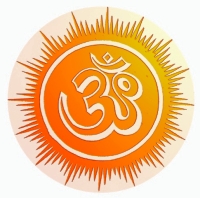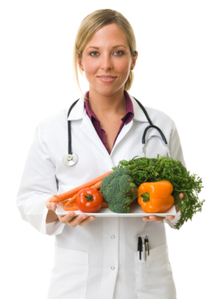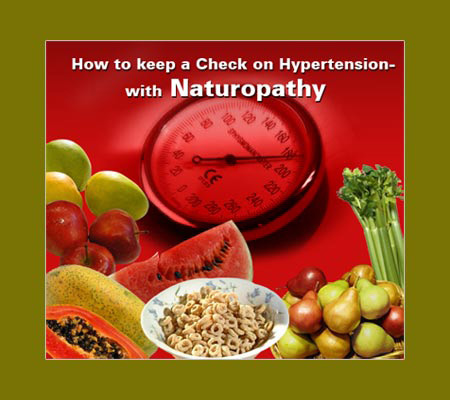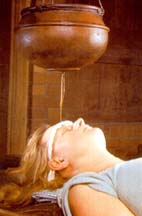Yoga-nidra is an efficient method of inducing complete physical, mental and emotional relaxation while maintaining consciousness. In fact Yoga Nidra not only brings physical and mental relaxation but also prepares the mind for spiritual evolution. It is mainly associates with pratyahara (withdrawing senses form sense-objects) and dharana (concentration).
In normal sleep consciousness is absent and the unconscious is in charge. In Yoga Nidra the consciousness directs the unconscious to relax. Yoga Nidra is a 'sleep' where all the burdens, stress, strain, anxiety are thrown off to attain more blissful state of awareness, a relaxation much more intense than ordinary sleep. Yoga Nidra is said to be the doorway to samadhi!'
Generally Yoga-nidra is practiced in Shavasana or sitting position. It may last for 25 to 45 min. It is important to remain awake and aware during the practice.
Relaxation
Preliminary preparation of the body.
Resolve
A personal goal is programmed into the unconsciousness. 'Sankalpa' (resolve)
A very special feature of Yoga-nidra is 'Sankalpa', a positive resolve about the aim in life. The relaxed body and mind are ideal soil for making a resolve. The 'Sankalpa' is affirmative autosuggestion of the statement. These are short, positive, precise about what you want to achieve.
e.g.
"I am successful,"
"I am peaceful,"
"I am becoming happier, healthier and more relaxed",
"I will awaken my spiritual potential",
"I will be successful in my all undertakings",
"I will achieve total health",
"I will be a positive help in spiritual progress of others", etc.
This recitation of auto suggestions in relaxed mind (alpha level of brain waves) sinks easily into subconscious mind and direct the conscious mind to transform the positive thought into reality.
Rotation of Consciousness
The consciousness is taken on a tour of the whole body in a structured fashion. The person has to just visualize the parts of the body to rotate the awareness. one has to shift one’s awareness from one part to the other. The whole process should be a pleasure and not a burden. There should not be any anxiety or expectation.
Respiration
In normal sleep consciousness is absent and the unconscious is in charge. In Yoga Nidra the consciousness directs the unconscious to relax. Yoga Nidra is a 'sleep' where all the burdens, stress, strain, anxiety are thrown off to attain more blissful state of awareness, a relaxation much more intense than ordinary sleep. Yoga Nidra is said to be the doorway to samadhi!'
Generally Yoga-nidra is practiced in Shavasana or sitting position. It may last for 25 to 45 min. It is important to remain awake and aware during the practice.
Relaxation
Preliminary preparation of the body.
Resolve
A personal goal is programmed into the unconsciousness. 'Sankalpa' (resolve)
A very special feature of Yoga-nidra is 'Sankalpa', a positive resolve about the aim in life. The relaxed body and mind are ideal soil for making a resolve. The 'Sankalpa' is affirmative autosuggestion of the statement. These are short, positive, precise about what you want to achieve.
e.g.
"I am successful,"
"I am peaceful,"
"I am becoming happier, healthier and more relaxed",
"I will awaken my spiritual potential",
"I will be successful in my all undertakings",
"I will achieve total health",
"I will be a positive help in spiritual progress of others", etc.
This recitation of auto suggestions in relaxed mind (alpha level of brain waves) sinks easily into subconscious mind and direct the conscious mind to transform the positive thought into reality.
Rotation of Consciousness
The consciousness is taken on a tour of the whole body in a structured fashion. The person has to just visualize the parts of the body to rotate the awareness. one has to shift one’s awareness from one part to the other. The whole process should be a pleasure and not a burden. There should not be any anxiety or expectation.
Respiration
- A period of awareness of the breath at special positions in the body.
- After rotation of the consciousness in such a sequence, focusing the attention on the act of breathing completes physical relaxation. One simply maintains awareness of breath, either at the nostril or of its passage through the navel and throat. This helps to withdraw the sense centers from their objects of sensations in "pratyahara".
Feelings and Sensations
- Pairs of feelings and emotions are experienced.
- Now an effort is made to bring to memory the intense physical and emotional feelings; they are re-experienced or re-lived and then effaced. Usually this is practiced with pairs of two opposite feelings like hot and cold, lightness and heaviness, pain and pleasure, joy and sorrow, etc. Relaxation at the emotional level and building up of strong will-power are the two major outcome of this procedure.

Visualisation
- Images are visualised mentally.
- The final stage of yoga nidra relates to mental relaxation. Generally such images and symbols are chosen for the visualization that have universal significance. To quote a few: the mountain, river, ocean, temple, church, cross, saint, flower etc.
Resolve - is repeated.
Return to Full Awareness
- A careful return to a normal state.
- A short yoga nidra follows. You can make your own script into a tape player or other recording device, and play it back anytime you wish. This particular yoga nidra will take about 25 to 45 minutes for the practice.

Steps
Preparation
- It should be done in a quiet place where no interruptions can take place. A meditation room is ideal. The practitioner lies down on the floor or a firm bed. The surface should be comfortable but not soft so that sleep comes easily.
- Lie flat on your back (Savasana) with the body stretched out, the head in straight line with the body, feet apart, arms besides the body and palms of the hands facing up. Be relaxed and comfortable. Now close your eyes. There should be no movement during yoga nidra. Remember you should not sleep, but remain awake all through the session.
- So say to yourself: "I will not sleep; I will remain awake."
- Please follow the voice with full awareness and feeling. If your mind is distracted during the practice, do not worry. Just continue the practice.
- Relaxation
- Take a deep breath and as you breathe in, feel the coolness and calmness spreading throughout the body. As you breathe out, feel your cares and worries flowing out of you. Become aware of the body and relax completely. Relax your body mentally.
- Now be aware of the sounds in the room. Allow your hearing to follow the sounds for a few seconds, going from sound to sound, without trying to identify them. Develop awareness of the room itself... the four walls, the ceiling and the floor, and your body lying on the floor or bed. Visualize your body lying down. Feel your body lying on the floor, feel the sensations of your whole body lying down, your whole body lying on the floor.
- Say to yourself mentally, "I am going to practice yoga nidra. I will remain awake all through the session."
Resolve
Now it is the time to make Sankalpa (resolve). State your affirmation mentally three times with feeling and awareness.
Rotation of Consciousness
- During these steps, focus your mind on the parts of your body and not on your breath. Relax each part of the body in turn.
- During this exercise it is helpful to see your body as an object and your mind as an instrument of your inner spirit directing the flow of prana into your body. As you go through the step of relaxing a specific part of your body, imagine that the prana, the essence of life, is flowing through this part relaxing and revitalizing the whole part, as you inhale and exhale freely.
- We will now rotate our consciousness through different parts of the body. Repeat the part in your mind at the same time become aware of that part of the body. Do not concentrate, but remain alert. Become aware of the right hand.
Right side
Right hand thumb, second finger, third finger, fourth finger, fifth finger, palm of the hand, back of the hand, lower right arm, upper arm, the shoulder, the armpit, the right side of the torso, the right upper leg, the lower leg, the ankle, the right foot, the right toes.
Left side
Left hand thumb, second finger, third finger, fourth finger, fifth finger, palm of the hand, back of the hand, lower left arm, upper arm, the shoulder, the armpit, the left side of the torso, the left upper leg, the lower leg, the ankle, the left foot, the left toes.
BackBecome aware of the right shoulderblade, the left shoulderblade, the right buttock, the left buttock, the spine, the whole back.
Front
Now go the top of the head. Become aware of the top of the head, the forehead, the right eyebrow, the left eyebrow, the space between the eyebrows, the right eye, the left eye, the right ear, the left ear, the nose, the lips, the throat, the right chest, the left chest, the middle of the chest, the navel, the lower belly.
Major Parts
The right leg, the left leg; both legs together. The right arm, the left arm, both arms together. The back of the body, the front of the body, the head, whole body, the whole body, the whole body (repeat one more time).
Are you awake? Repeat to yourself: "I am awake." Total awareness. Awareness of the whole body. The whole body lying down. See your body lying down. Visualize your body lying down.

Breathing
Become aware of your breath. Feel the natural rhythm of your breath, feel your natural, spontaneous breath. Do not force the breath; just awareness
Awareness of Sensations
- Now awaken the feeling of lightness—as if the body is made of cotton.
- Your body seems to be floating away from the floor.
- Next, Feel the body getting heavy - so heavy, it's sinking into the floor. Feel the head heavy, the arms, the torso... heavy. Feel the legs heavy and the feet heavy. The whole body is heavy... feel the whole body heavy…sinking into the floor... heavy... heaviness... the whole body is heavy.
- Awaken the sensation of heat, the experience of heat.
- The whole body is hot.
- Now experience bitter cold in the body.
- Now feel your body becoming alert... you are so alert. Feel yourself become alert... you are awake…you are awake...you are awake.
Visualization
- Yoga nidra is also augmented by incorporating visualization and mediation
- There are many different techniques you can use.
- This is the final stage of yoga nidra relates to mental relaxation. Generally such images and symbols are chosen for the visualization that has universal significance. To quote a few: the mountain, river, ocean, temple, church, cross, saint, flower etc.
- Use your feeling, awareness, emotion and imagination to develop images in your mind.
- Vividly visualize yourself in your favorite place
- Be relaxed.
- Be relaxed.
- Be relaxed.
- Stay in that situation for few minuses. You mentally get more more and more relaxed.
- Now move to next step.

Resolve
- Once again the resolve or sankalpa is intently thought of or even visualized repeat your affirmation mentally 3 times with feeling and emphasis.
- Thus, consciously one tries to direct the unconscious mind about the goal in life. This time the unconscious is very susceptible and therefore may accept the suggestion from the conscious mind with more intensity.
Return to Full Awareness
Now start taking normal natural breath, spontaneous breath. Now bring your awareness to your body lying stretched out and relaxed on the floor. Be aware of your physical existence. Become aware of the environment, room... the floor, the walls, the ceiling, and the noises in the room. Let your mind become completely external. Don’t make hurry to open your eyes. Lie quietly until your mind is completely awake and externalized. Start moving yourself slowly, stretching yourself. When you are sure you are awaken, open your eyes.
Benefits of Yoga Nidra
- Yoga Nidra may have untold benefits that go beyond the therapeutic.
- Yoga Nidra helps harmonizing two hemispheres of the brain and the two aspects of autonomous nervous system viz. sympathetic and parasympathetic. The rotation of body awareness stimulates different parts of the brain that control each and every body nerve. When you are aware of each part of your body, you are actually massaging the corresponding part in the brain as well. You establish the connection between the body and the mind. The impressions in the subconscious are brought to surface, experienced and removed. Thus, the fixation of awareness to the body is replaced with the awareness linked to subtler aspects of prana and spiritual dimensions.

Note
Everyone can practice. Even beginners who are stiff.



















.jpg)









